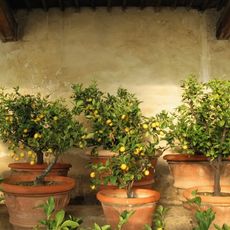Learn About The History Of Bearberries

Did you ever wonder what bears have for lunch in the boreal forests of the Arctic and Subarctic? Bearberry is often on the menu in the northern regions of North American, Europe and Asia. The history of bearberries is fascinating, since it's a plant long used in homeopathic and folk medicine. For more information about bearberry plants through time, read on.
Bearberry Plants through Time
Bearberry's scientific name is Arctostaphylos uva-ursi, and it's a low-growing member of the heath family, sometimes called kinnikinnick. Essentially a prostrate ground cover, bearberry shrubs are evergreen and offer flowers in springtime. The woody stems on these plants can grow to 5 or 6 feet long (1.5-1.8 m.) and produce a thick, wide matt. The little flowers look like narrow bells and can be white, pink or pink tipped. They develop into edible red berries, mealy to humans but delicious to bears. In fact, the species name "uva-ursi" means grape of the bear. Currently, gardeners use these shrubs as evergreen groundcover. The leaves take on an attractive golden hue in autumn. When you start talking about the uses of bearberry plants throughout history, you'll find that they have long been used in homeopathic medicine. From the Middle Ages, the herbals mention Uva Ursi as a reliable diuretic for urinary infection. By the early 1800s, it was a staple of herbal medicine in London. The history of bearberries in North America started in Canada. First Nations traditionally used bearberry roots to make a tea to treat persistent coughs. It was also used to slow excessive menstrual bleeding. They also made medicines from the stems that were used by women to prevent miscarriage, to assist recovery after childbirth or to induce menstruation. A drink made from the evergreen leaves was thought to cure bladder and kidney problems. Today, the plant is used less for homeopathic medicine than it was earlier in bearberry history. You can find bearberry leaves are in herbal teas available in commerce. They are suggested for use as a diuretic and to treat infections of the bladder, urethra, and kidney.
Gardening tips, videos, info and more delivered right to your inbox!
Sign up for the Gardening Know How newsletter today and receive a free download of our most popular eBook "How to Grow Delicious Tomatoes."

Teo Spengler has been gardening for 30 years. She is a docent at the San Francisco Botanical Garden. Her passion is trees, 250 of which she has planted on her land in France.
-
 How To Grow Garden To Table: A Guide For Home Cooks
How To Grow Garden To Table: A Guide For Home CooksWhat could be better than a meal that comes directly from garden to table? Show off your gardening and culinary skills with the very freshest food.
By Bonnie L. Grant
-
 Want a Backyard Mini Orchard? Create Your Own Container Orchard
Want a Backyard Mini Orchard? Create Your Own Container OrchardEasier to care for in small spaces, a backyard mini-orchard makes sense for busy gardeners and juicy fruit is the reward.
By Teo Spengler